Excalibur Mineral - Aramis rebuild project
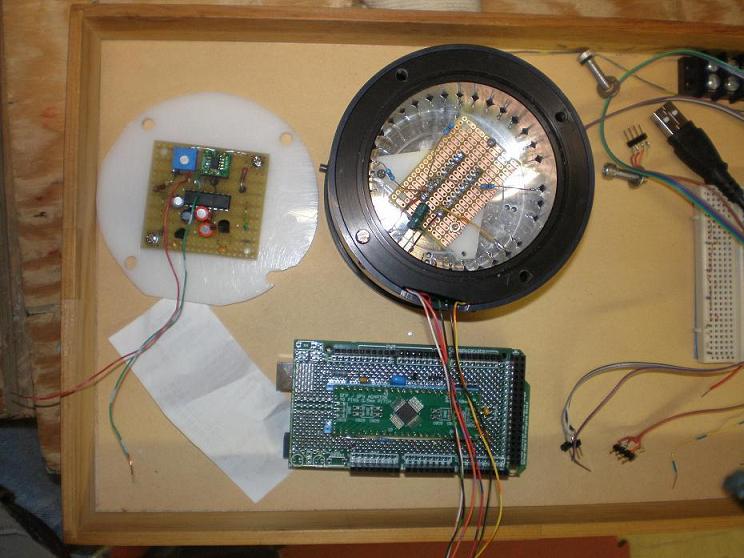
Toshiba linear CCD. This DIY detector project was mothballed when the Hamamatsu turned up on ebay.
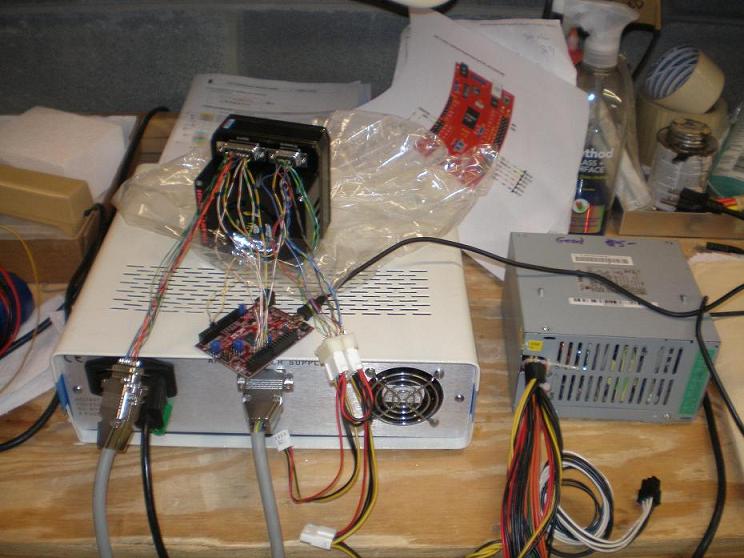
Hamamatsu CCD with TEC (thermoelectric cooling). It's unclear if this unit's TEC is functioning correctly.
The green light that indicates cooling is active does go on and off by software control.
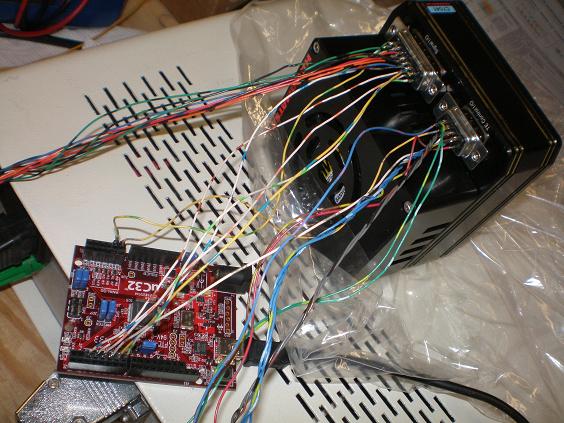
The ChipKit uC32 is a 32bit microcontroller with more memory and speed than the Arduino Mega.
But it has less i/o ports. Also it operates with 3.3V logic levels instead of 5V.
This is suited to the Hamamatsu CCD, but it requires level converters to communicate
with TTL logic.
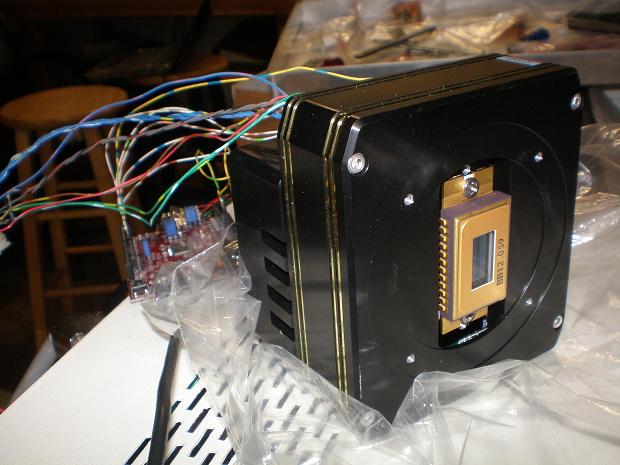
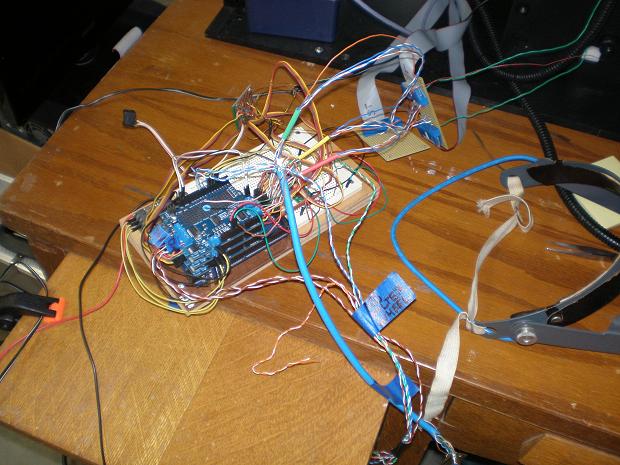
This is the initial testing of the Arduino Mega microcontroller with stacked Adafruit motor shields
controlling the stepper motors in the ND filter and microscope head. It is currently functional
and is being extended to also control the Oriental motor controller which drives the stepper motors
in the spectrograph's entrance slit, the confocal pinhole, and the linear stage which pans the
diffraction grating turret.
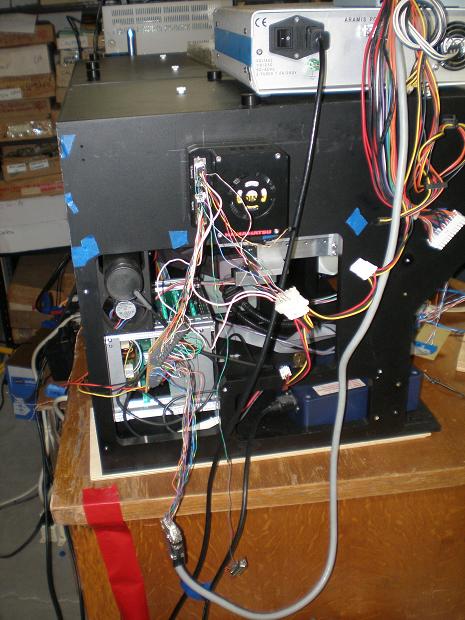
The main power bus is mounted on a small circuit card and connected to the Aramis power supply.
Also mounted on the same card is the connector block for the Hamamatsu CCD (mainly since it also
used a DB-15 connector). The Hamamatsu CCD requires for its TEC 5V at higher amperage
than the Aramis can supply. So it is obtained from an old PC power supply. This (switching) PC power supply is probably noisey and should be replaced by something quieter
(like the kind they use nowadays for home theater systems).
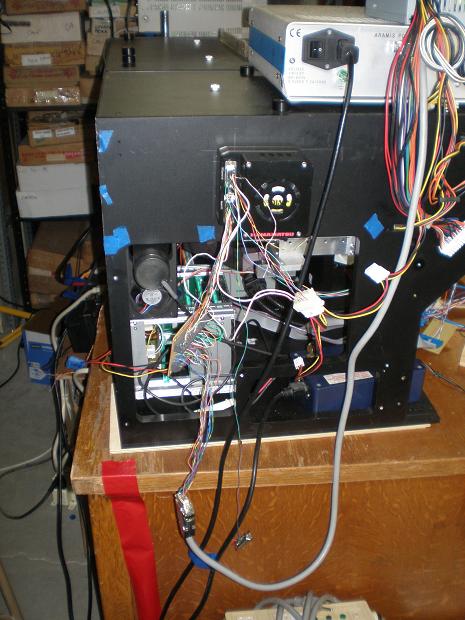
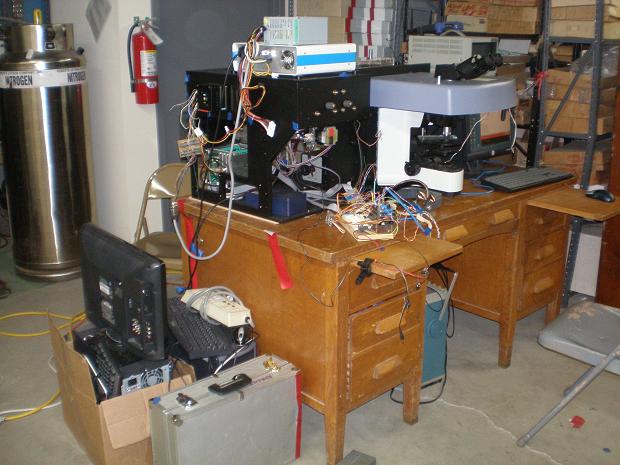
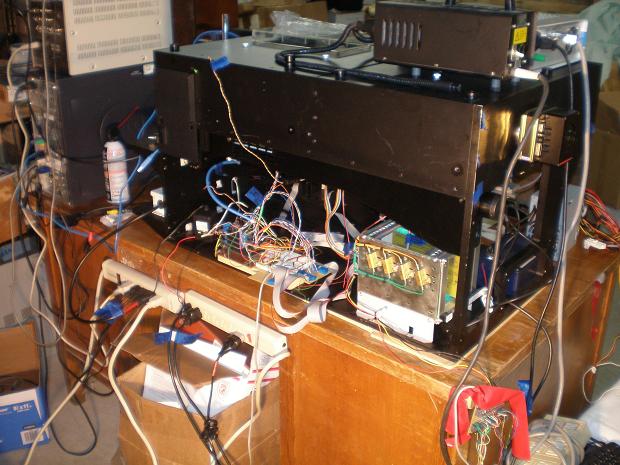
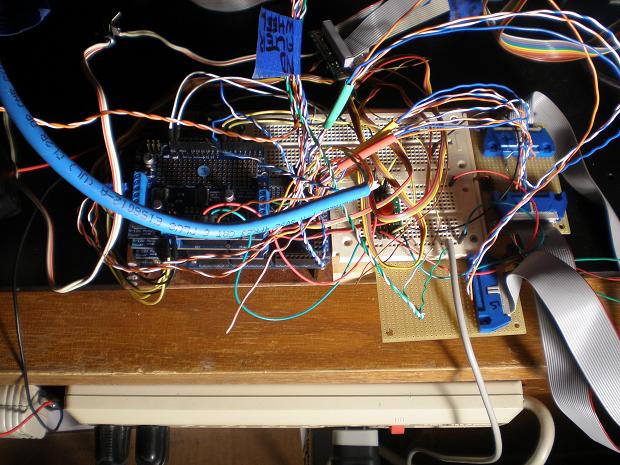
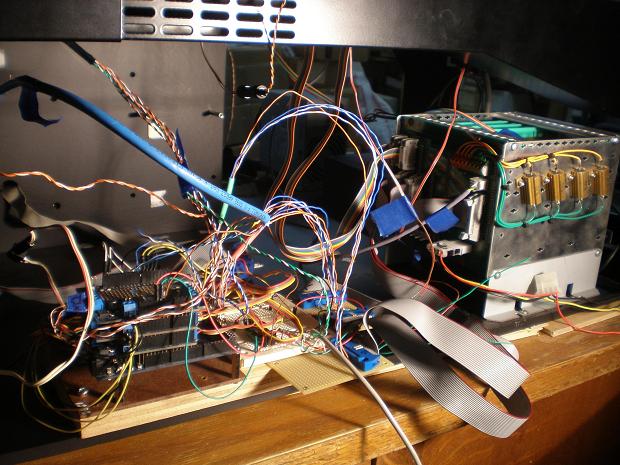
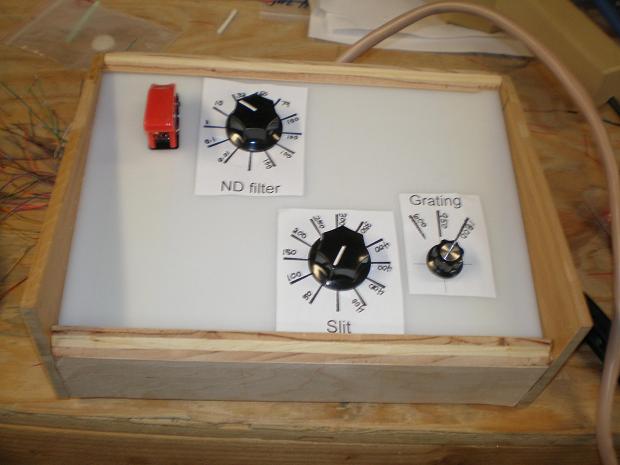
A minimal control panel needed for aligning the optics. Additional switches and dials will be
added as needed to control the shutters, polarizers, spatial filter, linear stage, ...etc.
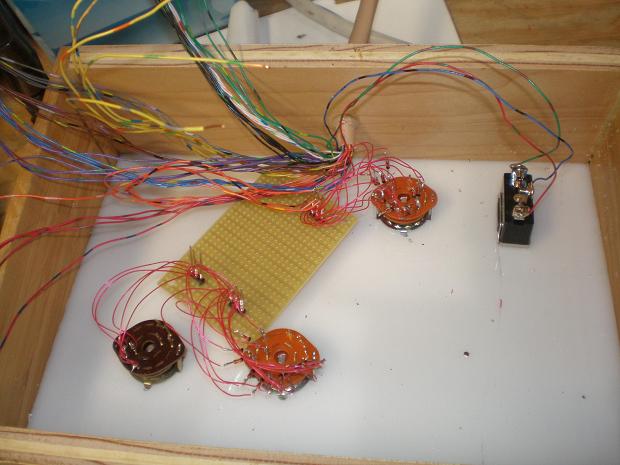
Using physical switches saves software memory but required more i/o ports so the
rotary switches were binary encoded with switching diodes.
[This control panel is no longer used and has been replaced by the computer user interface.
The PC based software will also be used to handle the imaging, spectrograph, RRUFF files, (FITS files?),
baseline correction, noise suppression, peak detection, database matching etc.]